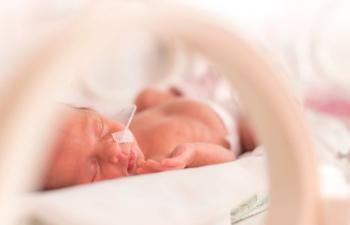
Prenatal Myelomeningocele Surgery Improves Outcomes
Prenatal surgery for myelomeningocele decreases the need for shunting and improves motor outcomes at 30 months, though it is linked to an increased risk of preterm delivery and uterine dehiscence at delivery, according to a study published online Feb 9 in the New England Journal of Medicine.
WEDNESDAY, Feb. 9 (HealthDay News) -- Prenatal surgery for myelomeningocele decreases the need for shunting and improves motor outcomes at 30 months, though it is linked to an increased risk of preterm delivery and uterine dehiscence at delivery, according to a study published online Feb. 9 in the New England Journal of Medicine.
N. Scott Adzick, M.D., of the Children's Hospital of Philadelphia, and colleagues randomized eligible women to undergo either prenatal surgery before 26 weeks' gestation or standard postnatal repair.
After recruitment of 183 of a planned 200 patients, the trial was stopped due to the efficacy of prenatal surgery. Among 158 patients whose children were evaluated at 12 months, the investigators found that the composite of fetal or neonatal death or the need for placement of a cerebrospinal fluid shunt occurred in 68 percent of the infants in the prenatal surgery group as compared with 98 percent among those in the postnatal surgery group. The actual rates of shunt placement were 40 percent in the prenatal surgery group and 82 percent in the postnatal surgery group. Compared to postnatal surgery, prenatal surgery was associated with an improvement in the composite score for mental development and motor function at 30 months as well as an improvement in hindbrain herniation by 12 months and ambulation by 30 months. Yet prenatal surgery was tied to an elevated risk of preterm delivery and uterine dehiscence at delivery.
"The study by Adzick et al is a major step in the right direction, but the still suboptimal rates of poor neonatal outcome and high maternal risk necessitate the use of less invasive approaches if such procedures are to be widely implemented," write the authors of an accompanying editorial.
One editorial author disclosed financial relationships with pharmaceutical companies.
Related Content
Newsletter
Get the latest clinical updates, case studies, and expert commentary in obstetric and gynecologic care. Sign up now to stay informed.










